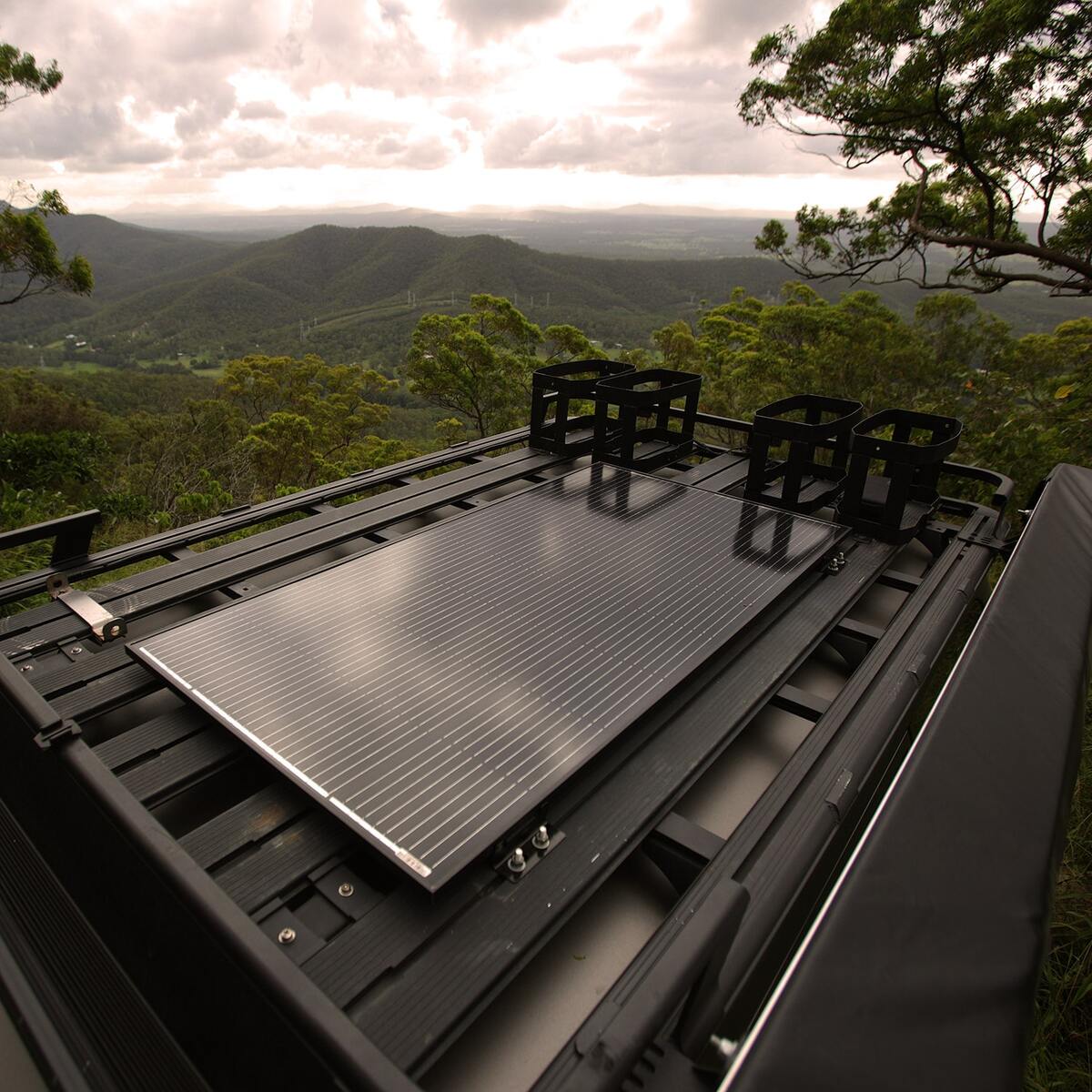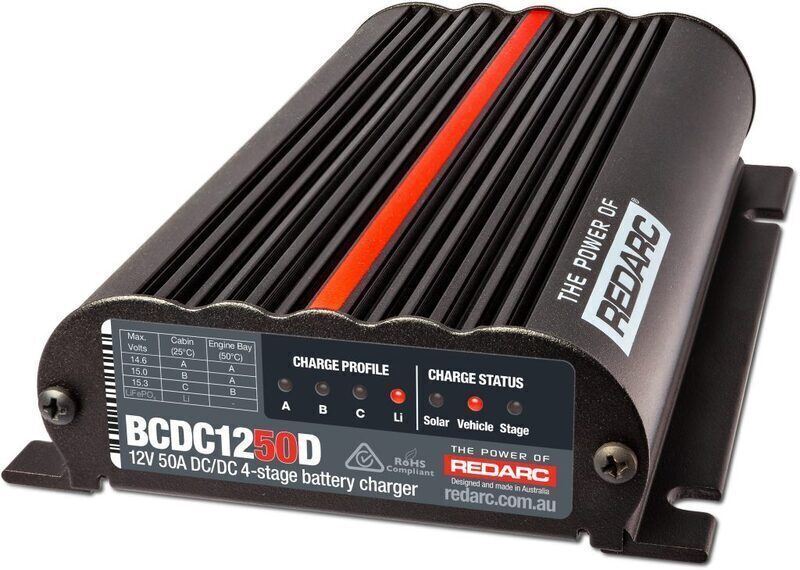DC to DC Battery Charging: How Does it Work and Why You Need One
When you're exploring the great Australian outback, reliable power is essential. A DC to DC charger can be your best mate, ensuring your auxiliary battery system stay charged and ready to use. In this guide, we'll explain what these chargers are, how they work and why they are important for your adventures. It's perfect for camping, caravanning or touring. Read on to discover the benefits and make your journeys smoother and more enjoyable.
What is a DC to DC Charger?
A DC to DC charger charges an auxiliary battery from a primary battery, usually in 4x4, caravans and rvs. It takes power from the vehicle's alternator and converts it to the right voltage and current for charging the auxiliary battery. Alternators alone aren't designed to charge multiple batteries or different types of secondary batteries.
These chargers are crucial for off-road or camping trips. They keep your auxiliary battery, whether in a caravan, camper trailer, or boat, charged and ready. This means your powered equipment can run off the auxiliary battery without draining the main battery. This is especially useful when parked for long periods. DC to DC chargers regulate the charging process, prevent overcharging, extend battery life, and provide a steady power supply.
How do camper trailer batteries charge?
Camper trailer batteries charge the same way with a DC to DC charger or similar using the vehicle’s alternator. When connected via an Anderson plug, a link forms between the car’s battery and the camper trailer’s batteries. Once the car starts, the alternator charges the car battery first, then the camper trailer battery.
Modern vehicles often have smart alternators that adjust their output, reducing voltage once the main battery is charged. This can complicate charging. A DC to DC charger is essential here. It ensures a consistent charge to the camper trailer battery, even when the alternator’s output varies.
Some DC to DC chargers have built-in solar regulators. This allows you to use portable solar panels to charge your batteries, providing a reliable power source when camping off-grid. The charger will automatically switch between engine power and solar power, ensuring your batteries are always charged efficiently.
Do I need a DC to DC charger if I have a smart alternator?
Yes, you need a DC to DC charger if you have a smart alternator. Smart alternators reduce their voltage output once the main battery is charged. This improves fuel efficiency but makes charging an auxiliary battery difficult.
A DC to DC charger solves this problem. It ensures a steady and reliable charge for your auxiliary battery, regardless of the alternator's variable output. Without a DC to DC charger, your auxiliary battery may not charge properly, leaving you without power for your essential gear.
Do I need a DC to DC charger in my caravan?

Yes, you need a DC-to-DC charger in your caravan. Caravans rely on auxiliary batteries when you need to power caravan appliances such as camping fridges, air conditioners or lights, and other equipment when you're off-grid. A DC-to-DC charger ensures these batteries are charged efficiently and safely.
Vehicle alternators alone can't charge your caravan's batteries properly. They are designed to maintain the vehicle's main battery, not to charge multiple or different types of batteries. A DC to DC charger regulates the voltage and current, ensuring your caravan's batteries receive a full charge.
Without a DC to DC charger, your auxiliary batteries might not charge fully, leaving you without power when you need it most. This is crucial if you camp in remote areas where a reliable power supply is essential.
The Benefits of a DC to DC Battery Charger
A DC-to-DC battery charger offers many benefits and here are some key advantages:
-
Efficiency: DC to DC battery chargers are highly efficient. They convert and regulate voltage, ensuring minimal energy loss and optimal power transfer during charging your batteries, such as lithium.
-
Battery Protection: These chargers use smart algorithms to protect your batteries from overcharging, overvoltage, and excessive discharge. This extends the lifespan of your batteries and keeps them performing well.
-
Multi-Battery Charging: DC to DC chargers can handle multiple auxiliary batteries at once. This is ideal for complex setups in caravans, camper trailers, and boats.
-
Voltage Regulation: Uneven input voltages can be a problem. DC to DC battery chargers regulate voltage levels, providing a stable and reliable charging environment for your charging system.
-
Solar Integration: Many DC to DC chargers come with built-in solar regulators. This means you can charge your batteries using solar panels, giving you a versatile and sustainable power source when the alternator is not available for use like when you are parked up.
-
Longer Off-Grid Capability: With a DC battery charger, your batteries will stay fully charged, allowing you to stay off-grid longer. This is perfect for extended trips into remote areas.
What size DC to DC charger do I need?
Choosing the right size DC to DC charger depends on your needs. First, consider the capacity of your auxiliary batteries. Larger batteries or multiple setups need a higher amp charger, like a 25-amp charger for a single battery or a 50-amp charger for larger setups. Think about your power usage too. If you have high-power equipment like fridges, lights, and inverters, you'll need a charger that can handle the demand. A higher amp charger will recharge your batteries faster, which is crucial for off-grid trips.
Ensure the charger matches your vehicle’s electrical system. Some models work with both 12V and 24V systems. If you plan to use solar panels, choose a charger with a built-in solar regulator for efficient charging from both the vehicle and solar panels. This ensures your batteries stay fully charged and ready for your adventures.
How do DC to DC chargers work with Solar Power?

Modern DC to DC chargers work seamlessly with solar power, perfect for off-grid adventures. They can connect directly to solar panels if they have a built-in solar regulator, saving you time and money, meaning you don’t need an extra external regulator. The charger regulates the varying voltages from solar panels, ensuring a steady and safe charge for your batteries.
When connected to both your vehicle’s alternator and solar panels, some chargers prioritise solar power. This reduces the load on your vehicle’s alternator and saves fuel. The charger can switch between solar and alternator power, ensuring your batteries are always charging most efficiently, whether parked or on the move.
If the solar panel's output drops due to low sunlight, the charger can boost the voltage to maintain optimal charging. This keeps your batteries charged even in less-than-ideal conditions helping charge the axillary batteries for longer.
Do DC to DC chargers drain the main battery?
No, DC to DC chargers do not drain the main battery. They protect your main battery while charging the auxiliary battery. These chargers only draw power when the engine is running, so they don't drain the main battery when the vehicle is off. They monitor the main battery’s voltage and reduce or stop drawing power if the voltage drops too low. This prevents draining the main battery.
Some chargers also have a low-voltage cut-off feature, ensuring the main battery retains enough power to start the engine. By regulating voltage and current, DC to DC chargers use power efficiently, charging your auxiliary battery without straining the main battery.


